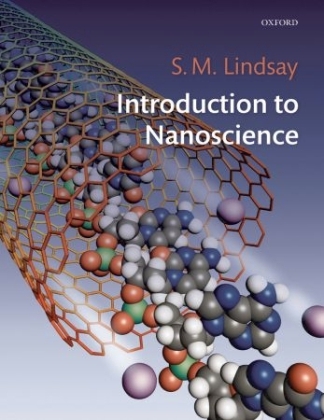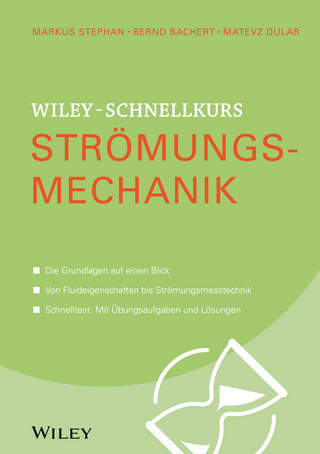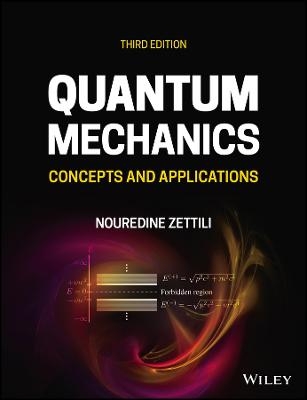
Introduction to Nanoscience
Seiten
2009
Oxford University Press (Verlag)
978-0-19-954420-2 (ISBN)
Oxford University Press (Verlag)
978-0-19-954420-2 (ISBN)
- Titel ist leider vergriffen;
keine Neuauflage - Artikel merken
This is the first text in nanoscience that integrates the physics, chemistry and biology of this new discipline. Each topic is treated assuming no background, but a conceptual emphasis and numerous examples and problems lead the reader to make contact with current research literature.
Nanoscience is not physics, chemistry, engineering or biology. It is all of them, and it is time for a text that integrates the disciplines. This is such a text, aimed at advanced undergraduates and beginning graduate students in the sciences. The consequences of smallness and quantum behaviour are well known and described Richard Feynman's visionary essay 'There's Plenty of Room at the Bottom' (which is reproduced in this book). Another, critical, but thus far neglected, aspect of nanoscience is the complexity of nanostructures. Hundreds, thousands or hundreds of thousands of atoms make up systems that are complex enough to show what is fashionably called 'emergent behaviour'. Quite new phenomena arise from rare configurations of the system. Examples are the Kramer's theory of reactions (Chapter 3), the Marcus theory of electron transfer (Chapter 8), and enzyme catalysis, molecular motors, and fluctuations in gene expression and splicing, all covered in the final Chapter on Nanobiology. The book is divided into three parts.
Part I (The Basics) is a self-contained introduction to quantum mechanics, statistical mechanics and chemical kinetics, calling on no more than basic college calculus. A conceptual approach and an array of examples and conceptual problems will allow even those without the mathematical tools to grasp much of what is important. Part II (The Tools) covers microscopy, single molecule manipulation and measurement, nanofabrication and self-assembly. Part III (Applications) covers electrons in nanostructures, molecular electronics, nano-materials and nanobiology. Each chapter starts with a survey of the required basics, but ends by making contact with current research literature.
Nanoscience is not physics, chemistry, engineering or biology. It is all of them, and it is time for a text that integrates the disciplines. This is such a text, aimed at advanced undergraduates and beginning graduate students in the sciences. The consequences of smallness and quantum behaviour are well known and described Richard Feynman's visionary essay 'There's Plenty of Room at the Bottom' (which is reproduced in this book). Another, critical, but thus far neglected, aspect of nanoscience is the complexity of nanostructures. Hundreds, thousands or hundreds of thousands of atoms make up systems that are complex enough to show what is fashionably called 'emergent behaviour'. Quite new phenomena arise from rare configurations of the system. Examples are the Kramer's theory of reactions (Chapter 3), the Marcus theory of electron transfer (Chapter 8), and enzyme catalysis, molecular motors, and fluctuations in gene expression and splicing, all covered in the final Chapter on Nanobiology. The book is divided into three parts.
Part I (The Basics) is a self-contained introduction to quantum mechanics, statistical mechanics and chemical kinetics, calling on no more than basic college calculus. A conceptual approach and an array of examples and conceptual problems will allow even those without the mathematical tools to grasp much of what is important. Part II (The Tools) covers microscopy, single molecule manipulation and measurement, nanofabrication and self-assembly. Part III (Applications) covers electrons in nanostructures, molecular electronics, nano-materials and nanobiology. Each chapter starts with a survey of the required basics, but ends by making contact with current research literature.
1. What is nanoscience? ; PART I: THE BASICS ; 2. Quantum mechanics ; 3. Statistical mechanics and chemical kinetics ; PART II: TOOLS ; 4. Microscopy and manipulation tools ; 5. Making nanostructures: top down ; 6. Making nanostructures: bottom up ; PART III: APPLICATIONS ; 7. Electrons in nanostructures ; 8. Molecular electronics ; 9. Nanostructured materials
| Erscheint lt. Verlag | 22.10.2009 |
|---|---|
| Zusatzinfo | 4pp colour plates, 280 b/w line drawings and halftones |
| Verlagsort | Oxford |
| Sprache | englisch |
| Maße | 196 x 254 mm |
| Gewicht | 1218 g |
| Themenwelt | Naturwissenschaften ► Physik / Astronomie ► Theoretische Physik |
| Technik | |
| ISBN-10 | 0-19-954420-4 / 0199544204 |
| ISBN-13 | 978-0-19-954420-2 / 9780199544202 |
| Zustand | Neuware |
| Informationen gemäß Produktsicherheitsverordnung (GPSR) | |
| Haben Sie eine Frage zum Produkt? |
Mehr entdecken
aus dem Bereich
aus dem Bereich
Concepts and Applications
Buch | Softcover (2022)
John Wiley & Sons Inc (Verlag)
45,90 €


